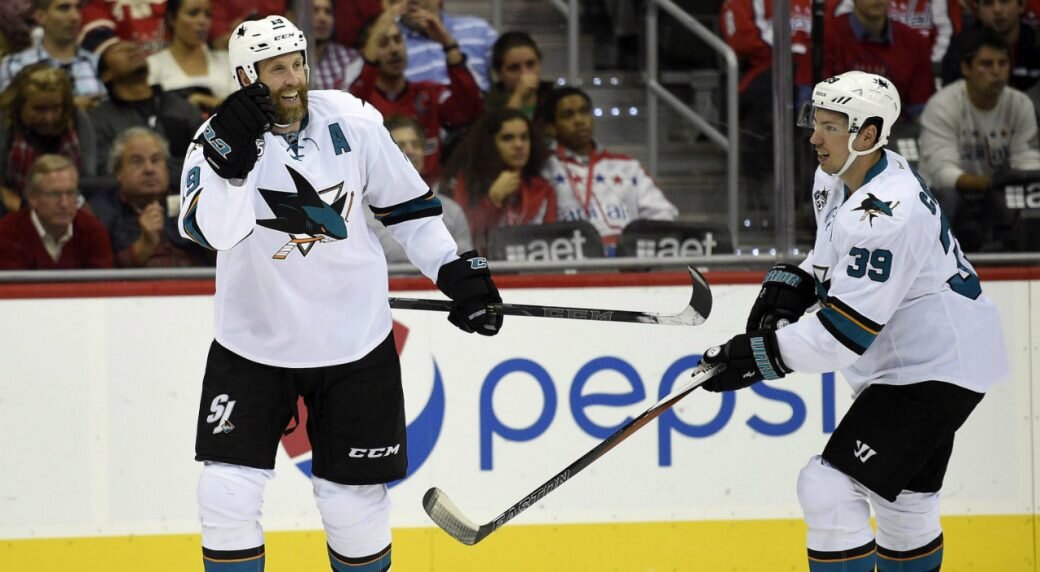October 31, 2019 | 4:50pm ET
BY DAVID PAGNOTTA, The Fourth Period
SHARKS, STARS COULD USE A WAKEUP CALL
TORONTO, ON – The calendar is about to hit November and in a few weeks we should have a strong indication of where most teams are at this season.
There have been a few surprises in the first month of the 2019-20 campaign, and while teams like Edmonton, Vancouver and Buffalo have jumped out of the gate, the poor stars in Dallas, San Jose and, to a much lesser extent, Tampa Bay have raised more eyebrows.
The Lightning aside – their 6-4-2 start isn’t horrible, despite some expecting them to be 10-2-0 in their first dozen games – there is some call for concern in a group with the Stars and Sharks. Neither club is going to rush into making any decisions, but the next 10 games could be critical for both teams.
Goaltending is a problem for the Sharks. Sure, they’d like Timo Meier (two goals, two assists) to wake up and see captain Logan Couture light the lamp a lot more than the one time he’s done it this month, but goalies Martin Jones and Aaron Dell haven’t been sharp and that’s not a good sign.
Jones struggled for most of last season before coming to life in the playoffs. I’m not sure the Sharks can afford to wait for him to get back on track that late this time around.
Again, Sharks GM Doug Wilson isn’t panicking just yet, nor is he contemplating a change behind the bench right now, but these next two-to-three weeks are very important in Northern California.
As for the Stars, it’s the offence, or lack thereof, that’s startling.
Dallas is last in the NHL in goals-for per game, averaging 2.21.
Tyler Seguin is doing as much as he can to help carry most of the load, Alexander Radulov is contributing, and Roope Hintz (a budding star in this league) already has seven goals on the season, but where are the reinforcements?
When the Stars added free agents Joe Pavelski and Corey Perry this past summer, most yelled, “About time!” myself included. Adding two veterans, and taking into the account the emergence of Hintz, the Stars entered the season with a much-needed secondary-scoring threat.
The problem? Jamie Benn.
The Stars' captain has just one goal and five assists in 14 games, and his game hasn’t been on point this season – in fact, Benn didn’t look like himself for most of last season, either. I’m not about to declare Benn entering the downside of his career, but the Stars need him to get back on track if they’re going to make any noise this season.
General Manager Jim Nill put this team together to compete this season, and they’re just not there yet. Maybe the primary concern rests behind the bench? This is a team to keep an eye on these next few weeks.
AROUND THE ICE
The Vegas Golden Knights are in Year 3 of their NHL-takeover tour and their powerhouse of a roster is expected to do a lot of damage this season.
Led by two lines capable of being a No.1 unit for just about any club in the NHL, and a goaltender who remains one of the more under-rated netminder’s in the League, the Knights mean business this season.
Or at least that’s what they’ve been selling us.
I saw two very different Vegas teams last Friday and Sunday when I watched them faceoff against the Colorado Avalanche and Anaheim Ducks.
In their first game, they looked lost. They were outrun, outhit and out-defended as the Avs basically dominated the game on route to a 6-1 victory without any offence from their top line.
After the game, Knights head coach Gerard Gallant told the media there has been “some inconsistent play” of late and called their performance that night “embarrassing.”
“The work always comes first. The work and the compete,” Gallant said, when asked how to fix his team’s recent sloppiness. “Once you work hard, all the system stuff will take care of itself. We haven’t changed our system in two-and-a-half years; we just have got to start getting back to work and getting back to winning pucks. It’s simple.”
The team clearly listened. As Sunday’s 5-2 win over the Ducks was reminiscent of how the Golden Knights performed in their first two seasons in the NHL.
When Vegas is on, they’re on. It’s hard not to notice. The foot is always on the gas, they consistently apply pressure in every facet of the game, they’re physical and they simply don’t let up.
Their next test comes tonight against the Montreal Canadiens, coming off a 4-1 win in Arizona last night, and I suspect the team wants to end the month on a high note.
Help is on the horizon as defenceman Nate Schmidt is set to return from injury, but if there’s one area I see the Golden Knights trying to improve this season, it’s their blueline. Adding a No.2 or No.3 defenceman could push this team from Stanley Cup contender to Stanley Cup favourite, but the salary cap may keep the bulk of this club in tact this season – and given how their ‘last’ two seasons have gone, they’re more than confident in the group they’ve got.
UPGRADE FOR HOCKEY HELMETS
We can’t seem to go a week during the season without some type of conversation surrounding concussions, concussion-protocol or anti-concussion measures. And this isn’t exclusive to hockey.
As the medical and sports equipment communities attempt to examine various preventative measures to both lower the risk of sustaining a concussion during play or steps towards properly addressing post-concussion syndrome, a Swedish-based company has been way ahead of the game and we’ll just begin to hear about them in the coming weeks.
I spent the first part of last week in Stockholm meeting with the co-founders of MIPS, an industry leader in brain protection and research as it relates to sports and exploring their laboratory. While I never turn down a trip to Sweden, it was a detailed visit with some smart minds showing off impressive technology.
If you’re a cyclist, snowboarder, skier or motorcycle enthusiast, there’s a very good chance you’re already familiar with MIPS. Since 1995, when the company was first founded, they have been researching the brain and the impact of rotational brain injuries versus linear/horizontal contact to the head.
The difference, based on the company’s research, is that contact/impact made to the brain on an angle causes more damage than straight-on impact. The fluid in the skull surrounding the brain allows for linear movement, and as a result, the brain slides back and forth – basically, there’s some give. Impact made to the head on an angle results in the brain rotating in the skull and hitting its barriers before the fluid has the opportunity to get there.
MIPS has built its patented Brain Protection System (BPS) found inside the helmet – effectively a cap that rotates on impact by 10mm-15mm in all directions, offering full coverage to lessen (not fully prevent) the harmful forces transmitted to the brain. It’s the standard in other sports and it’s being introduced to the hockey world next month.
MIPS is working with True Hockey to offer its product in True’s new helmet, the Dynamic 9 Pro Helmet, launching in North America on Nov. 8 and across Europe on Nov. 15.
I’ll have more on what MIPS has to offer around the time of True’s helmet launch and in the next issue of our magazine, with intel on the company, its history trying to work its way into hockey and the NHL, and more.
David Pagnotta is the Editor-in-Chief of The Fourth Period.
Follow him on Twitter and Instagram.
Past Columns:
Jul. 03, 2019 - Josi set to cash in on next contract



